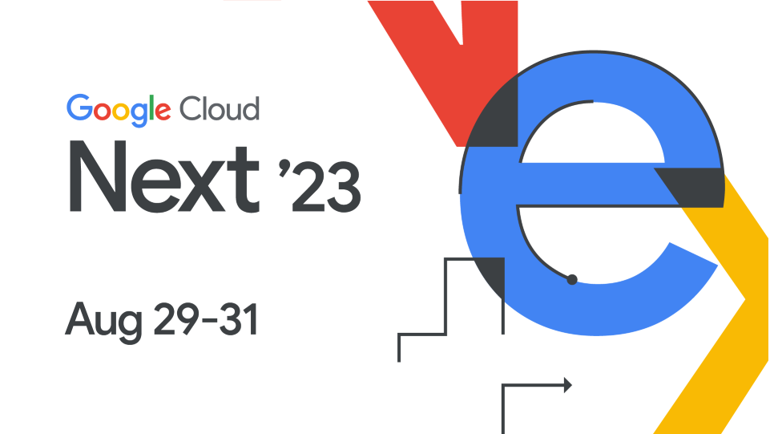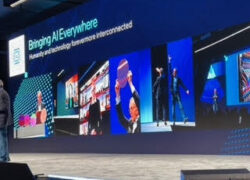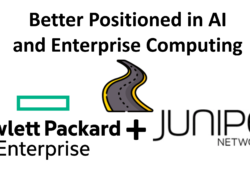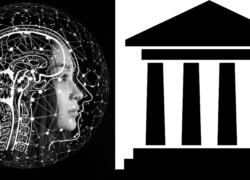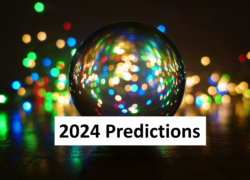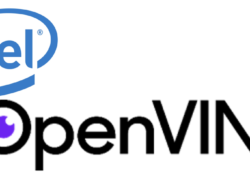by
Jean S. Bozman, President, Cloud Architects Advisors LLC
and
M.R. Pamidi, Ph. D., Principal Analyst, Cabot Partners
Google Cloud Next’ 23 was a three-day conference in San Francisco from August 29-31, 2023. The event brought together cloud computing professionals worldwide to learn about the latest Google Cloud Platform (GCP) innovations. Google Cloud is reinventing itself as it engages more closely with enterprise businesses that plan to reinvent their business models with AI. Many consider Generative AI as a user-oriented tool for efficient searches. However, the enterprise focus of GCP was apparent from the start of the three-day event.
Google Cloud CEO Thomas Kurian opened the keynote with significant announcements that may help the tech giant keep up with its peers—Amazon and Microsoft—in the still-evolving cloud market. Generative AI was the central theme at the conference, as AI powers many of the latest advancements and features. Google continues to face acute pressures to increase its AI offerings as competition from its rivals heats up.
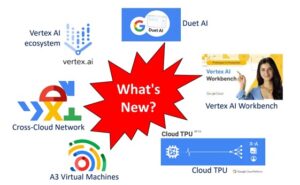
Figure 1: Google Cloud Next 2023 Key Announcement
Some of the key announcements (Figure 1) from the event included:
- General availability of Duet AI, a new natural language processing (NLP) technology that can help businesses generate more creative and engaging content.
- Preview of Vertex AI Workbench, a new integrated development environment (IDE) for building and deploying machine learning (ML) models.
- Launch of Cloud TPU v5e, a new machine learning accelerator that can train models up to three times faster than previous generations.
- Availability of A3 Virtual Machines (VMs) based on NVIDIA’s H100 GPUs offers up to 80% better performance for ML workloads than previous generations.
- Introduction of Cross-Cloud Network is a new networking platform that makes connecting and securing applications across multiple clouds easier.
- The Vertex AI ecosystem expands with new partnerships with DocuSign, Box, Canva, and Salesforce.
The event showcased Google’s commitment to innovation in the cloud computing space. It highlighted the company’s latest technologies for building, deploying, and managing applications and its growing ecosystem of partners.
In addition to the keynote presentations and breakout sessions, the event also featured several hands-on labs and workshops. These sessions allowed attendees to learn about GCP technologies and try them out for themselves.
Google emphasized the duality of personal AI and enterprise AI throughout the three-day conference, along with customer examples from some of GCP’s largest customers, including General Motors, Mahindra Motors, and US Steel. These customers are running end-to-end enterprise applications for mission-critical workloads on Google Cloud infrastructure, as in global communications (GM’s OnStar), retail sales (Mahindra), and manufacturing (US Steel). The cloud company currently has a $32 billion annual run rate, the largest in its history, as enabled by enterprise AI and the capabilities of the Google Cloud infrastructure.[1]
Kurian, who took the helm at Google Cloud in 2019, has deep experience with enterprise infrastructure; he was Oracle Corp.’s President from 1996 to 2018, reporting to Oracle CEO Larry Ellison and, later, to CEOs Mark Hurd and Safra Catz and engaging with Oracle’s enterprise customers worldwide.
Personal GenAI and Enterprise-Wide GenAI
“We’re announcing important new products to help each of you use generative AI,” said Google Cloud CEO Thomas Kurian, “First, to help the world’s leading customers and developers to build AI with our AI-optimized infrastructure and our AI platform for developers, Vertex AI.” “Generative AI (Figure 2) will likely spark greater customer requirements for performance, scalability, and reliability,” Kurian said, relating user-based AI usage to enterprise-wide AI for corporate applications. The new Duet AI product is positioned as an assistant and collaborative software for end-users.
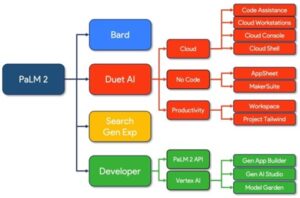
Figure 2: Google’s Generative AI Stack
Google Cloud’s generative AI product for business users, Duet AI, is positioned as a collaborative assistant, while the Vertex AI targets developers – and end-to-end enterprise AI benefits from Google Cloud’s scalability, performance, and reliability, supporting millions of users across 38 geographic regions worldwide. That network of Google Cloud operations reaches the Americas (North America and South America), the European continent, Asia/Pacific, and Australia) – and will likely continue to expand as GCP competes with AWS and Azure for more business across all continents.
“We’re announcing important new products to help each of you use generative AI,” said Google Cloud CEO Thomas Kurian, “to help the world’s leading customers and developers to build AI with our AI-optimized infrastructure and our AI platform for developers, Vertex AI.”
Kurian has deep experience with enterprise infrastructure; his previous work was as Oracle’s President, engaging with Oracle’s enterprise customers with a global presence worldwide. He expects that broader use of generative will lead to faster cloud adoption for transactional and corporate applications that have not yet moved to the cloud.
Google and AI
Google has long been known as an inventor and developer of new AI technologies. Now, with the fall release of ChatGPT from Microsoft and OpenAI, Google Cloud is showing its Vertex AI, Duet AI, and GCP AI infrastructure as a competitive offer to enterprises. In many cases, those enterprises are working to update aging on-premises applications – often with reduced IT staffing as they consolidate their corporate data centers — and to speed the adoption of AI-based technology throughout their business operations (Core to Cloud to Edge) to help their enterprises achieve better business results.
AI will “touch every sector, every industry, every business function and significantly change the way we live and work,” said Alphabet and Google CEO Sundar Pichai, pointing to Google Cloud’s enterprise focus from the start of the three-day conference in San Francisco.
Business executives, Pichai said, “want a partner that’s been on the cutting edge of technology breakthroughs—be it from the desktop to mobile, to the cloud, or now to AI—and a partner who can help navigate and lead them” through the next phase of digital transformation driven by AI.
GCP Investment and Adoption
Google and Google Cloud, Pichai said, have invested heavily “in the tooling, foundation models and infrastructure” to make that happen, starting with specialized TPU and GPU processors and continuing with software that can run customers’ containers and virtual machines on the GCP.
Pichai cited three customers who are leveraging Google’s GenAI software, which was introduced in March: General Motors (GM), which applied conversational AI to its OnStar-connected vehicles; HCA HealthCare, which is working with Google to create Med-PaLM foundation models for scalable AI; and US Steel, which is using Google AI to summarize and visualize instruction manuals.
Below is a detailed look at everything Google announced at its event.
Vertex AI Gets Better

Figure 3: Vertex AI Architecture
About two years ago, Google unveiled Vertex AI, a unified artificial intelligence platform that offers all of Google’s cloud services under one roof. With Vertex AI, you can build ML models or deploy and scale them easily using pre-trained and custom tooling. It was followed by Vertex AI Vision, the machine learning platform as a service (ML PaaS) offering from Google Cloud. Since the general availability of generative AI services based on Vertex AI earlier this year, developers can use several new tools and models, such as the word completion model driven by PaLM 2, the Embeddings API for text, and other foundation models. Google is adding Meta’s Llama 2 and Technology Innovation Institute’s (TII) loyalty-free Falcon 40B, the UAE’s leading large-scale open-source AI model. This makes Google Cloud the only Cloud provider to support first-party, open-source, and third-party models. APIs of these models will be accessible through a new tool in its Cloud Platform named Model Garden.
Duet AI For Google Workspace
At I/O 2023, Google announced “Duet AI” as the branding for generative AI features in Workspace. At that time, its availability was limited to trusted testers by invitation only. However, now Google has made Duet AI for Google Workspace available for all users with a no-cost trial. Google will charge $30 per user for access to Duet, as per CNBC.
Duet AI is a development interface powered by AI that includes code and chat assistance for developers on Google Cloud’s platform. Duet AI covers a range of generative AI tools for Google‘s productivity apps, including Gmail, Drive, Slides, Docs, and more. Google is essentially taking on Microsoft‘s Co-pilot.
Google wants to make Gmail, Docs, Sheets, Slides, and Meet more helpful with the help of generative AI.
At I/O, Gmail got a new feature called “Help me write,” allowing people to use generative AI to send auto-replies to emails and modify them to meet their needs best. Meanwhile, Sheets has a “Help me organize” feature where users can ask for information to be organized for them in the sheet through a simple word prompt. Similarly, in Google Slides, there’s a new “Help me visualize” entry where users can use prompts to get AI-generated images.
Google also announced further Workspace AI integration in Google‘s other core apps, such as Meet and Chat. Within Meet, Google‘s new AI features include taking notes in real-time: When they click “take notes for me,” the app will capture a summary and action items as the meeting goes on. Google will be able to show them a mid-meeting summary so that they can catch up on what happened.
Another new Meet feature allows Duet to “attend” a meeting on your behalf. Users click on the “attend for me” button on a meeting invite, and Google can auto-generate some text about topics the users might want to discuss. Those notes will be viewable to attendees during the meeting so that they can discuss them in real time.
Other new features include dynamic tiles and face detection, giving users their video tile labeled with their name in a meeting room. An automated translated captions feature will detect when another language is spoken and display the translation on-screen. The new automatic translated captions feature supports up to 18 of the world’s languages.
Lastly, Google is integrating Duet AI into Google Chat. Now, users can chat directly with Duet AI and ask questions about their content, get a summary of documents in a space, and catch up on missed conversations. It’s easier to use Google Chat because of the new interface and a new shortcut option. Google also integrates “smart canvas” capabilities, such as smart chips, inside Google Chat. Google Chat now lets users add up to 50,000 members to a space. The change marks a significant increase from the previous limit of 8,000 members. In addition, a new feature called Huddles is coming to Google Chat. With Huddles, instead of jumping out of the conversation into a meeting, the meeting is integrated directly into the chat experience. Google says Huddles will be available in public preview by the end of the year. In the coming weeks, Google will add support for third-party apps to Chat, including products from Zoho, Workday, and Loom.
Gen AI Unicorns and Google Cloud
During the event, Google said 70 percent of Generative AI unicorns—and more than half of all funded AI startups—are Google Cloud customers. This year’s Google Cloud Next ’23 summit illustrated how Google offers the optimized AI-optimized infrastructure to host and run AI models. That is intended to be a selling point for business decision-makers who have hesitated to migrate mission-critical applications to cloud service providers (CSPs).
Our Analysis
When the pandemic began, the pace of cloud migration accelerated. Still, some applications never moved from corporate data centers, worried that cloud service providers could not meet legacy applications’ security, availability, and governance.
The most widely used Cloud Service Providers (CSPs), including AWS, Microsoft Azure, and Google Cloud Platform, benefited from cloud migrations. Still, many more applications have not yet moved to the cloud. IDC has reported that many enterprise customers subscribe to two, three, or more cloud providers, but still, nearly half of overall applications remain in corporate data centers.
That’s why Google Cloud executives and leading customers spoke about Google’s heavy investments in infrastructure in recent years. “Our ultra-scale, highly reliable, AI supercomputing systems combine TPU and GPU accelerators with high-performance AI-optimized storage, scalable networking, offloads, and water-cooling,” Kurian said. The firm’s compilers and software tools optimize AI models “to deliver the best performance, latency, and overall throughput.”
Kurian cited those customers—and more—including Yahoo!, which is migrating 500 million mailboxes, with nearly 500 petabytes of data, to run on Google Cloud. He specifically cited Google Cloud infrastructure as a differentiator, given its development of the GKE Kubernetes engine, user-focused products for AI—Vertex AI for developers and Duet AI for users—and optimized cloud infrastructure hardware for end-to-end management of AI resources. Beyond that, Google Cloud is building an AI ecosystem to engage with enterprise customers. Now, Google Cloud must reach out to more business decision-makers – including CXOs and finance executives – to convince them that now is the time to move the next wave of business workloads to the cloud, using Google Cloud services to do so.
[1] “Google Cloud Begins Profitability Era: 5 Huge Q2 Earnings Takeaways,” CRN Cloud News, July 26, 2023.
